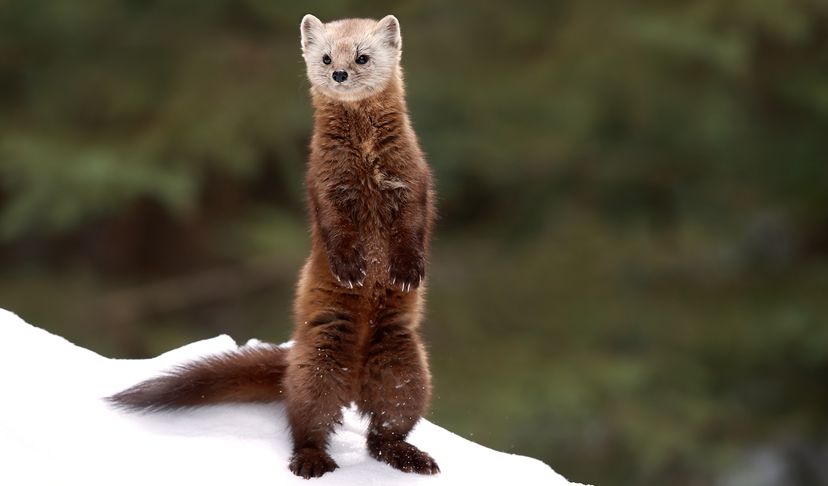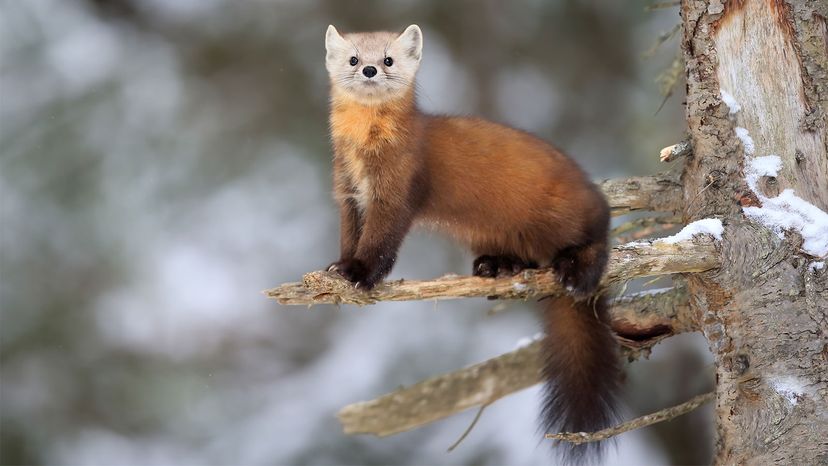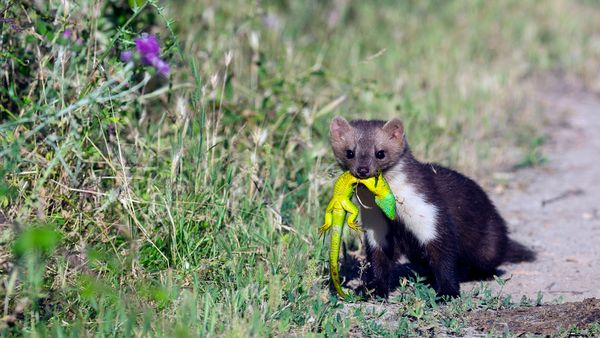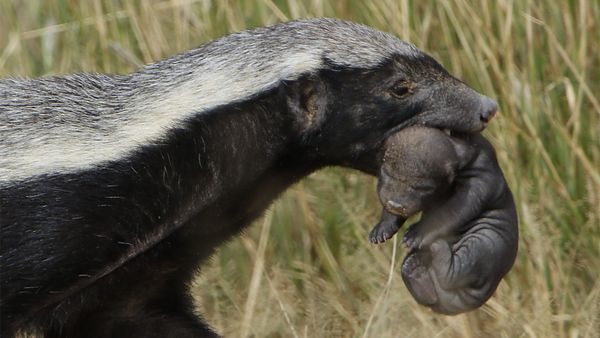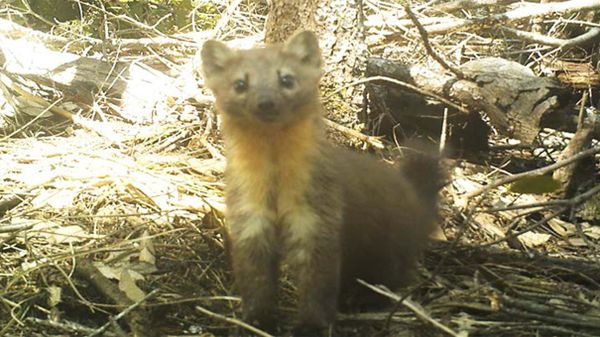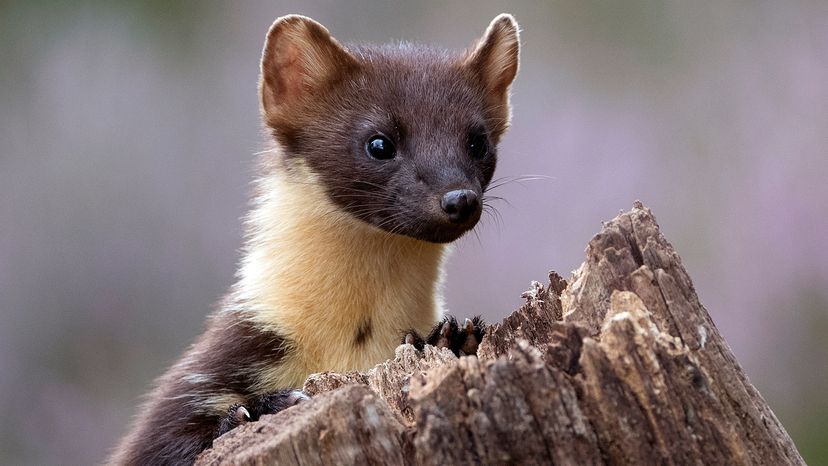
Agile, elusive and undeniably adorable, the pine marten (Martes martes) is a member of the Mustelidae family — a group that includes other mammals such as mink, weasels, otters, polecats and badgers. Pine martens, as well as almost all of the other six types of martens around the globe, usually live deep in coniferous and deciduous forests, jumping from branch to branch and tunneling through the snow. Pine martens are found across Europe and even in parts of the Middle East. In Britain, the population has experienced a sharp decline, causing them to be a rare and endangered species, but luckily, they're making a comeback.
Pine martens, as well as other species of marten, are small and slender creatures comparable in size to a domestic cat. They grow to be 25 to 31 inches (68 to 81 centimeters) long, including their bushy tail, and only weigh between 2 and 5 pounds (0.9 and 2.2 kilograms). Their silky brown fur, small, rounded ears, big paws and yellowish-tan bib give them their lovable look. But don't let their cuteness and size fool you — their paws contain sharp, partially retractable claws, and they're known to be aggressive. Those powerful claws, along with the martens' speed and ability to climb trees, allow them to easily turn small mammals into their next meal. They even have the rare level of speed needed to catch a squirrel, making them an important part of balancing the ecosystem. Overall, martens eat a varied diet; they catch rabbits, mice and small birds, and will forage for berries, worms, insects and eggs. They live for an average of about eight years in the wild.
Advertisement
